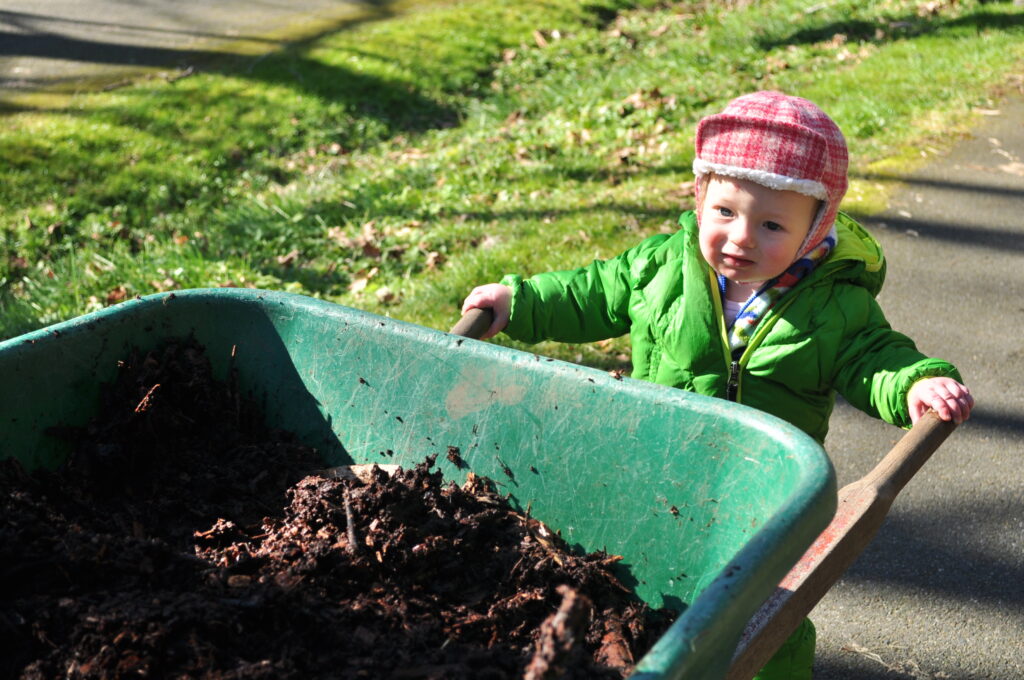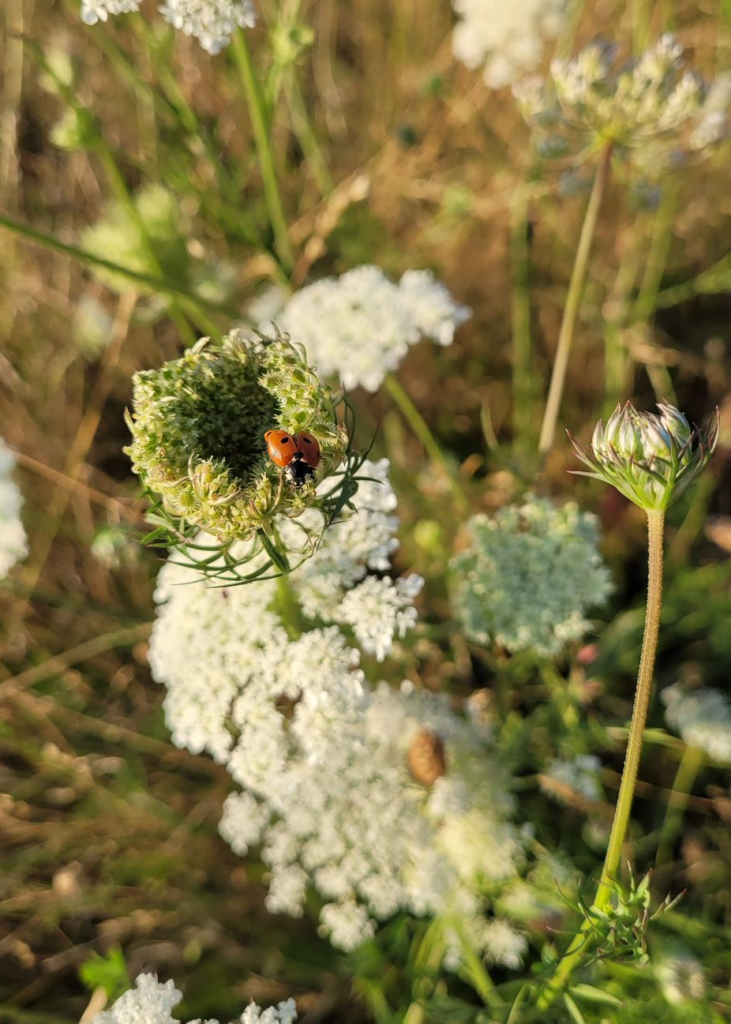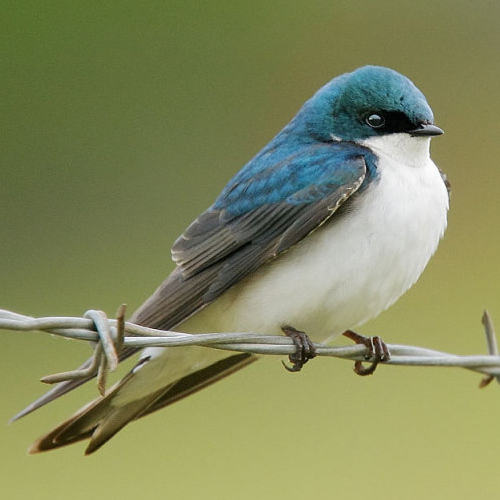
Temperatures have been steadily warming up, coaxing us to go out and enjoy the sun after a long winter. With the cherry blossoms and red flowering currants starting to add a pop of color to our local landscape, your impulse might be to start brushing away the dredges of winter foliage and restart anew for spring.
Don’t spring into action too quickly though! Certain pollinators need the extra ground cover to survive before warmer temperatures arrive. Bumble bees and ground-nesting bees require protection from the elements during frigid nights and spring showers. Early April may see mining bees, mason bees, carpenter bees, and bumble bees flying around, but other species like sweat bees are still hiding away, awaiting the arrival of warmer days.
Increasing awareness of how spring cleaning can impact our bee community is one way we can help fulfill Seattle’s commitments as a member of Bee City USA, a network of cities who strive to protect bees by fostering native plants.
April also brings us Earth Day celebrations, ushering in more opportunities for collective community engagement and learning experiences geared towards our local forests and parks. Because we don’t plant trees at the time of year, we wanted to share some of our favorite seasonal considerations for land care. Read on for more information about our local spring pollinators.
Helping Spring Pollinators
Bees are not the only ones who need our care and attention throughout the springtime transition. Birds, bats, butterflies, moths, flies, wasps, beetles, and small mammals all play a critical role in local ecosystems and our food production system.

When should you spring clean outside?
If you’re still reaching for snow gear or heavy jackets it’s too early to clean up your garden. Certain pollinators keep cover until May, and removing ground cover leaves them vulnerable to frigid night temperatures. Want to go the extra mile to help pollinators? Consider being a part of No Mow May or Low Mow Spring, a movement to allow grass to grow longer and flower. By mowing less, you help provide bees with the nectar and pollen they need to survive, and also provide shelter to other invertebrates. You can also support our local bees by leaving dead plant stems for bees to nest in. You’d be surprised by how long bees actually use your dead stems to nest and hibernate! Ideally you should never remove dead stems if you want to support a native bee nest, but leave them for at least 2 years to help welcome bees into your garden. Embrace a “messy” garden and wait until warmer temperatures arrive to help out our local wildlife!
What about spring planting?
You may have the urge to go out and plant a tree in honor of spring’s arrival or Earth Day. Be mindful though of local seasons and plant requirements. Some people are startled to learn that we do not plant all year long and are particularly curious as to why we do not usually plant any trees in honor of Earth Day in April. Fall and Winter are our best planting season here in Seattle, providing the cool, cloudy, and rainy weather that helps our plants grow roots and establish successfully in restoration sites. The same can hold true for your yard. Learn more in our Forest Steward Field Guide.
Want to do more to help our local bird population?
With our feathered friends getting busy, it’s time to dig in deep on how, when and where our bird friends are nesting. We also need to be mindful of any urban forest restoration efforts during this time, as potential loss of nesting, foraging and brood habitats exposes eggs, chicks, hatchlings, and adults to higher levels of predation. Loss of natural nesting resources also in turn, reduces invertebrate resources, affecting nest survival and chick success. If unavoidable during the nesting season, immediate disturbance and/or habitat loss created by restoration activities should be directly mitigated through conservation measures (avoidance, or creation of buffers and barriers around used vegetation). Read the link above and check out this checklist and guide to local birds from Birds Connect Seattle (formerly Seattle Audubon) for further information on how to best proceed with gardening and restoration during nesting season.

Want to have an impact in your broader community? Get involved!
- Participate with the Green Seattle Partnership on Earth Day and every day: Find an upcoming event
- Get out and enjoy the birds: Upcoming events | Seward Park Audubon Center
- Classes (free for BIPOC): Take a Class – Tilth Alliance
- Count bumble bees: PNW Bumble Bee Atlas
Further reading
The Native Pollinator Habitat Restoration Guide – essential guide for native pollinator habitat restoration in the Puget Sound region, includes site assessment, design and four-phase restoration approach to pollinator friendly habitat. Includes plant lists native to the Puget lowlands known to support the life cycle of native pollinators!
Habitat Management for Bumble Bees in the PNW – outlines bumble bee resource needs and best practices for managing bumble bee habitat, includes additional links to pnwBumbleBeeAtlas.org for bumblebee identification and monitoring methods.
Pollinator-Friendly Parks by Xerces Society – curious about the life history of pollinators? Great introduction to the pollinator basics, threats to pollinators and strategies for conservation.
Bees of the Puget Sound Lowlands by The Common Acre – the go-to weatherproof pocket guide to native bee identification, designed to inspire curiosity and conservation action!
Links
Make Space for Bumblebee Nests | Bumblebee Conservation Trust
Why You Should Plant a Garden That’s Wasp Friendly | NY Times
Gardening with Natives | Washington Native Plant Society
Ecological Horticulture | Rebecca McMackin, Horticulturalist + Garden Designer
Bring Back the Pollinators | Xerces Society

Thank you for this nice article. FYI, I was surprised by a recent post in Robert Parvin’s Garden Myths presenting evidence that roots don’t grow all that well in cooler months. They actually grow more in the growing season. Maybe the conventional wisdom about fall plantings is wrong. Here’s the address for the article. https://www.gardenmyths.com/tree-roots-grow/